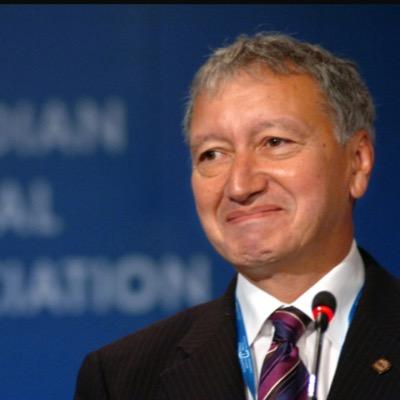
Who pays? by Brian Day
Nov 01, 2005
BC Medical Journal
 BC Medical Journal Volume 47, Number 9, November 2005, page 469
BC Medical Journal Volume 47, Number 9, November 2005, page 469
Editorial
Who pays?
“The best things in life are free; but you can keep them for the birds and bees, now give me money; that’s what I want.” —John Lennon
I doubt if any of us chose to enter medicine because of the potential for financial rewards, but the resources that money can buy are essential to maintain the quality of our medical practice. Most of us operate a private office and fund its infrastructure and operating expenses. Without adequate revenue we cannot provide service at the level we would like, nor can we finance continuing medical education, new technology, and sustain a modern practice. Many believe in the fee-for-service model. So-called health experts who propose saving the system by pressuring governments to put doctors on salary might be surprised by the interest shown in a salary-based model. Imagine a 37-hour week with benefits, overtime pay, holiday pay, pensions, etc., and all overhead expenses paid. The reality is that governments know they are on to a good thing. After all, fee-for-service is piece work as exists in the so-called sweat shop factories and is good for the employer and consumer, but demanding on the worker. Most patients would accept that the $28 in gross office revenue received by a family doctor for a visit is insultingly low. What message are we sending when we offer to reduce fees as was proposed in the recent reallocation proposal for family practice? As with fees in other specialties that have been voluntarily decreased in the past, are we not admitting that the service was previously overpaid? We have seen similar problems in the past relating to “relative value fee guides” when attempts were made to extract funds from particular fee items or specialties in order to boost others. The problem is the single-payer system with limited funds and rationed health service delivery. Doctors and patients must conform to a global budget that offers no rewards for efficiency, productivity, or excellence. One cannot easily put a price on saving a life, or on the value of restoring the ability to walk or read. Are a doctor’s services worth as much as those of a lawyer? Is a neurosurgeon worth more than a psychiatrist? In our system, there are no financial rewards for excellence, expertise, or additional training (as there are in professions such as law, accounting, and architecture). Should there be, and if so who decides what and how much? In the non-medical world, the market influences income levels and helps determine worth. In the medicolegal marketplace, lawyers pay surgeons more for describing a particular operation than government pays them for performing it. There are no objective parameters for determining appropriate remuneration.
The overall rise in health costs, overhead, and other expenses, and the rationing imposed by the single-payer government model have led to reduced practice revenue. We have embraced a paternalistic attitude on the part of government. When it comes to office expenses we are considered independent contractors, but on the revenue side we are conscripted workers. Instead of providing the necessary revenue to deliver appropriate service and fund expenses, we accept educational grants, malpractice premium supplements, and retirement funding, and give up flexibility in allocating our own resources.
In 1944, when an average British Columbia worker made 91 cents per hour, an orthopaedic surgeon’s fee for treating osteomyelitis was $300! (In 2004, the fee is $313.57). In 1961, the surgeon’s fee for surgical reduction of a patella fracture was $100. By 2004, the fee had increase to $318. To put the inflation factor in context, the cost of a Vancouver house in 1944 was about $4000; in 1961 it was $13,900, and by 2004, the median price was $503,141. In 1981, the fee for arthroscopic meniscectomy (the most commonly performed orthopaedic operation) was $294, while today it is $236 (a 1981 dollar is worth $2.11 in 2004). I have cited examples from the field of orthopaedics, but similarities exist in all areas of practice. I will leave the interpretation of the above figures open for debate, but they may explain why newly qualified practitioners lag behind their predecessors in their ability to pay off debts or purchase a home. Even if some of the older fees were inflated, it remains clear that recent generations of doctors have helped curb rather than increase health care costs. This is confirmed by the fact that the percentage of the Canadian health care budget spent on physicians continues to fall and was estimated at 12.9% of total health expenditures in 2003, having declined steadily since 1987 when it peaked at 15.7% (CIHI). The anti-doctor campaign promoted by many has often focused on the overpaid doctor concept. “Doctors’ fees and salaries combined now account for about two-thirds of total health care expenditures in Manitoba,” wrote Peter Hudson, chair of a Canadian Centre for Policy Alternatives Health Reform Working Group in an article targeting so-called overpaid doctors. How would the average reader interpret such a statement? In a sentence deliberately worded to have a double interpretation, the “salaries” actually referred to all salaries of all workers in health care. This is just one example of deliberately misleading anti-physician propaganda.
The recent controversy regarding a new “boutique” clinic underlines some of the conflicts regarding health care financing. The reality is that spending more money will lead to better and quicker service. Patients are not getting the service we want to give them and our ability to deliver excellent care is constrained. Much has been made of waiting lists for access to specialists, surgery, MRIs and other technologies. We even have a national council and a federally appointed expert discussing how to study and manage wait lists. Waiting in our emergency rooms and in doctors’ offices or clinics often causes great distress. In the free market, many such problems could be addressed by improved design and infrastructure and by increasing the numbers and quality of staff. The addition of nurse practitioners or physician assistants might create a better functioning office. The problem is, who pays? The experiments with many of the alternative funding mechanisms have met with variable success and mixed reviews. Despite incorporating additional staff in many hospital-based clinics, less personalized service and in many cases even longer waits have resulted.
Until now, the market system has been largely excluded from the world of Canadian medicine, but get ready for a new era. Change is coming and doctors need to educate themselves on the emerging reality of the new style of Canadian medical practice that has been mandated by the Supreme Court. We have a unique opportunity to benefit from the experience of other countries with universal health care. We can copy their successes and learn from their mistakes. It is important that we recognize the fiscal reality of government-funded health care in Canada. With skyrocketing costs, restoration of funding to a level that will significantly increase revenue to physicians’ practices and allow improved service to patients will not come from governments. The market is no panacea for the ills of our health system, but I trust doctors’ integrity and commitment to their patients enough to believe they will perform better than government bureaucrats at directing resources in ways that benefit patient care.
— Brian Day




 BC Medical Journal Volume 47, Number 9, November 2005, page 469
BC Medical Journal Volume 47, Number 9, November 2005, page 469